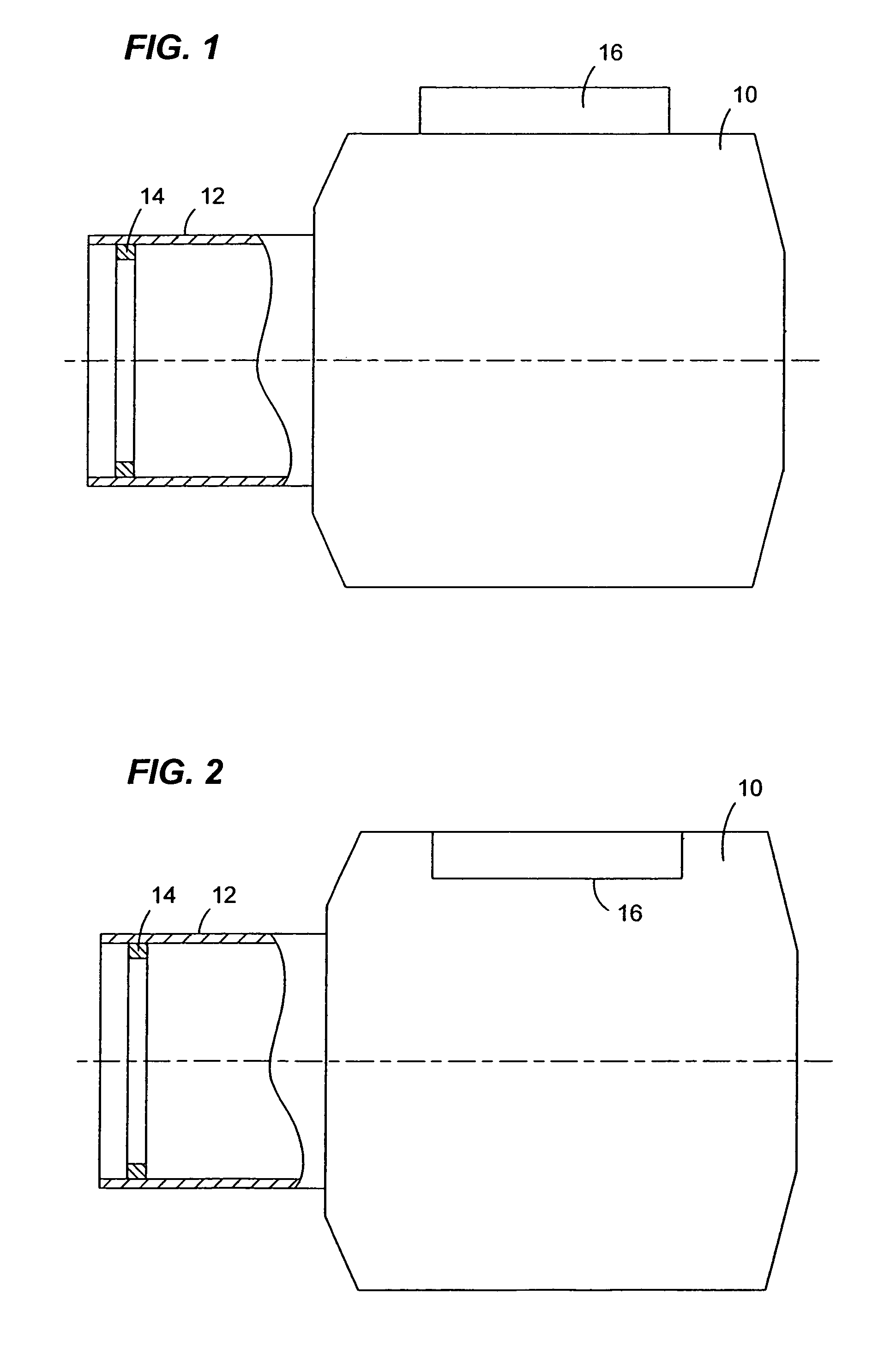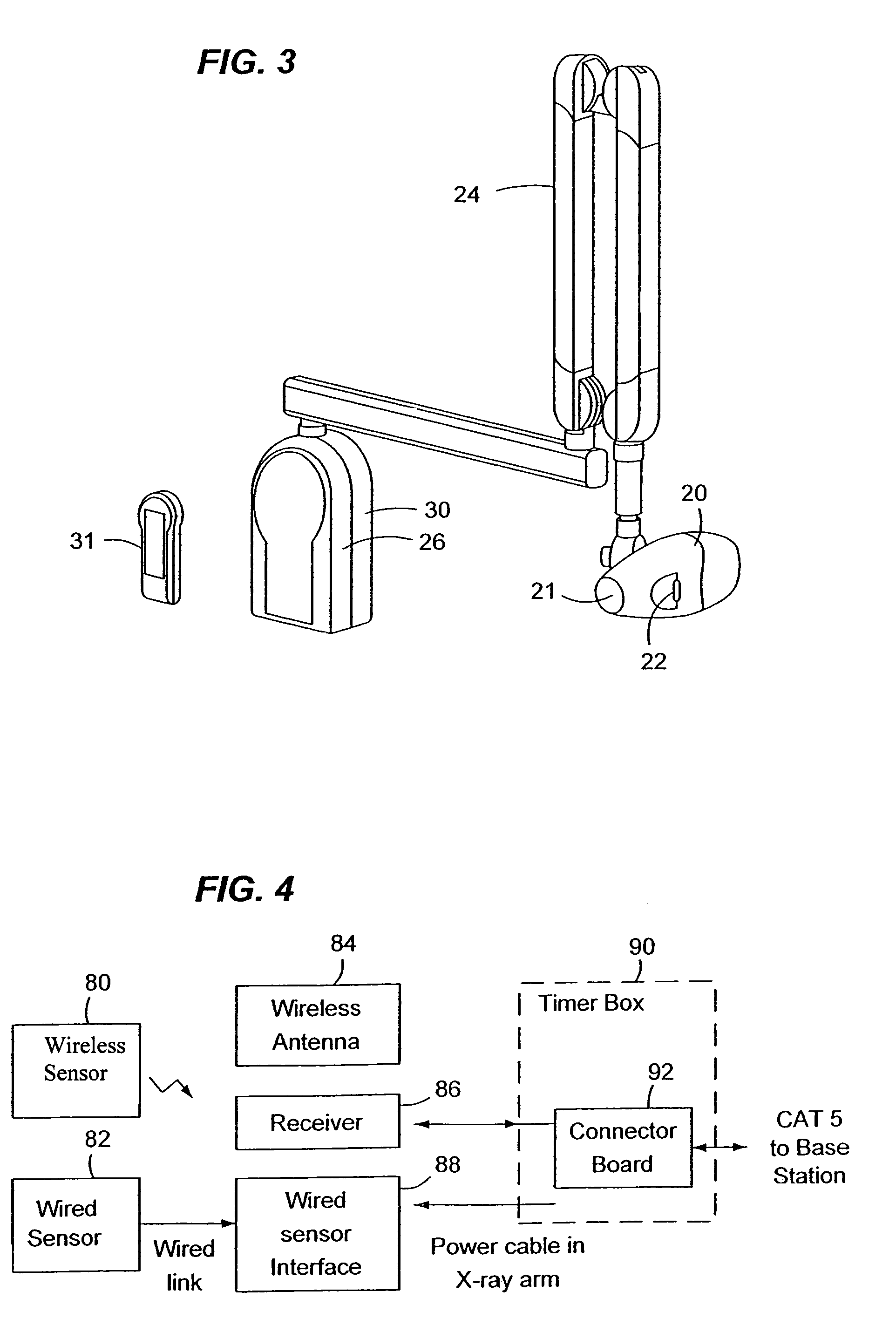Installation of a receiver as part of an x-ray tube housing
a receiver and tube housing technology, applied in the field of x-ray receivers, can solve the problems of limiting the placement of the sensor in the mouth, and extra wires being annoying to the patient and clinician
- Summary
- Abstract
- Description
- Claims
- Application Information
AI Technical Summary
Benefits of technology
Problems solved by technology
Method used
Image
Examples
Embodiment Construction
[0041]The invention will next be described in connection with certain exemplary embodiments; however, it should be clear to those skilled in the art that various modifications, additions, and subtractions can be made without departing from the spirit or scope of the claims.
[0042]The present invention is directed to x-ray systems, e.g., for use in medical or dental applications. The present invention may be used with charge-coupled devices (CCDs), active pixel sensor (APS) arrays, or any other suitable type of receptor.
[0043]As explained previously, one of the challenges related to wireless sensors has been to identify a practical and convenient location for the radiofrequency (RF) receiver and its related circuitry. The antenna should preferably be within reasonably close proximity to the transmitter that is typically housed within the sensor. On one hand, medical and dental offices typically contain furniture, equipment, and cabling that together limit the practical location for su...
PUM
 Login to View More
Login to View More Abstract
Description
Claims
Application Information
 Login to View More
Login to View More - R&D
- Intellectual Property
- Life Sciences
- Materials
- Tech Scout
- Unparalleled Data Quality
- Higher Quality Content
- 60% Fewer Hallucinations
Browse by: Latest US Patents, China's latest patents, Technical Efficacy Thesaurus, Application Domain, Technology Topic, Popular Technical Reports.
© 2025 PatSnap. All rights reserved.Legal|Privacy policy|Modern Slavery Act Transparency Statement|Sitemap|About US| Contact US: help@patsnap.com



